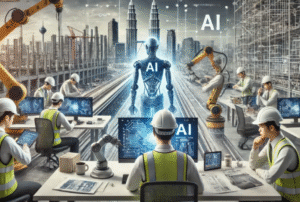As artificial intelligence (AI) becomes increasingly embedded in every industry, the need for scalable, reliable, and adaptable AI solutions is more critical than ever. Designing AI for the future isn’t just about building smarter algorithms—it’s about engineering systems that can evolve, handle growing complexity, and operate efficiently at massive scales.
Let’s explore the leading engineering approaches that are shaping the next generation of scalable AI.
1. Modular and Microservices Architectures
Building AI in modular, microservices-based architectures allows developers to create flexible and scalable systems. Instead of a monolithic AI that’s difficult to update or expand, microservices split functionalities into independent, easily deployable services.
Key Benefits:
- Seamless scalability
- Faster updates and maintenance
- Resilience through distributed systems
Example: Cloud-based AI services like AWS SageMaker and Google Vertex AI are designed with modular architectures to scale with user demand.
2. Federated Learning and Edge AI
Future AI must function across distributed devices without relying solely on centralized data centers.
Federated learning enables AI models to train across decentralized devices while preserving data privacy, and Edge AI processes data locally to reduce latency.
Key Benefits:
- Enhanced privacy and security
- Real-time processing at the edge
- Scalability across millions of devices (IoT, smartphones, autonomous systems)
Example: Autonomous vehicles and smart home devices leveraging on-device learning and decision-making.
3. Automated Machine Learning (AutoML)
AutoML frameworks democratize AI development by automating model selection, hyperparameter tuning, and feature engineering. This reduces human intervention and accelerates deployment at scale.
Key Benefits:
- Reduced development time
- Lowered barrier to entry for AI adoption
- Scalable model deployment across various industries
Example: Platforms like Google AutoML and H2O.ai offering end-to-end automation for AI model creation.
4. Scalable Data Infrastructure
Data is the fuel for AI. Future-ready AI systems require robust data pipelines, real-time data processing, and cloud-native storage solutions. Engineering scalable data infrastructures ensures that AI models are trained and updated with the freshest, most relevant information.
Key Benefits:
- Continuous learning from live data streams
- Scalable storage for petabytes of data
- Faster insights and decision-making
Example: Apache Kafka, Snowflake, and Databricks enable real-time data ingestion and scalable processing for AI systems.
5. Explainable and Ethical AI (XAI)
Scalability isn’t just technical—it’s also about trust.
Building explainable AI frameworks that offer transparency into decision-making processes is vital for regulatory compliance, user acceptance, and ethical deployment at scale.
Key Benefits:
- Increased transparency and accountability
- Better regulatory compliance (GDPR, AI Act)
- Wider adoption across sensitive industries (healthcare, finance)
Example: Tools like IBM’s AI Explainability 360 and Microsoft’s Responsible AI dashboard provide explainability features out-of-the-box.
6. Sustainable AI Engineering
As AI models grow larger (think GPT-4, Gemini, etc.), their energy demands skyrocket.
Sustainable AI practices focus on optimizing models for energy efficiency, using greener data centers, and developing lightweight AI models without compromising performance.
Key Benefits:
- Reduced environmental footprint
- Lower operational costs
- Future-proofed AI systems aligned with ESG goals
Example: Pruning techniques, quantization, and knowledge distillation are used to create smaller, faster models like DistilBERT.
7. Continuous Integration and Continuous Deployment (CI/CD) for AI (MLOps)
Finally, scaling AI requires robust MLOps pipelines—bringing the best practices of DevOps into machine learning projects.
MLOps ensures that AI models are versioned, tested, deployed, and monitored systematically.
Key Benefits:
- Faster, reliable AI deployments
- Automatic retraining and model updates
- Scalable operations across multiple AI products
Example: Kubeflow, MLflow, and AWS MLOps tools enable scalable AI lifecycle management.
Final Thoughts
Engineering AI for the future demands a holistic approach—where scalability, ethics, sustainability, and automation are all part of the blueprint.
Organizations that embrace these engineering principles will be best positioned to lead in a world increasingly powered by AI, ensuring their solutions can grow, adapt, and deliver real value at every scale.
Are you ready to future-proof your AI systems?
Stay ahead by building with scalability, ethics, and innovation at the core of your AI strategy.
Would you also like me to create a short executive summary or bullet-point version for easier sharing or presentations?

Also Read :
